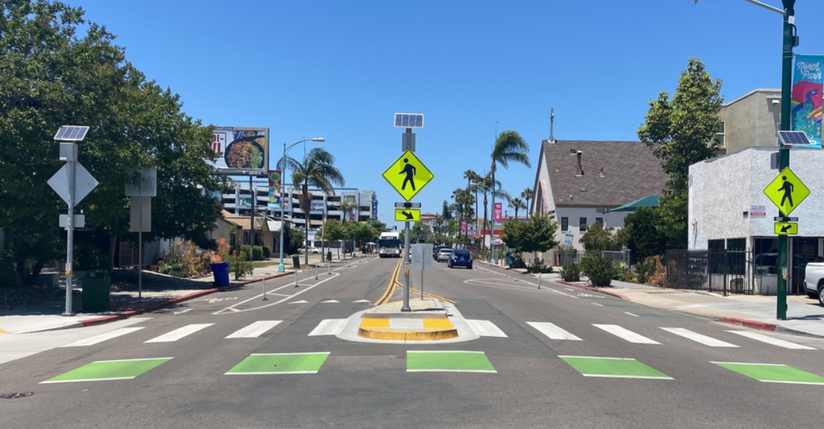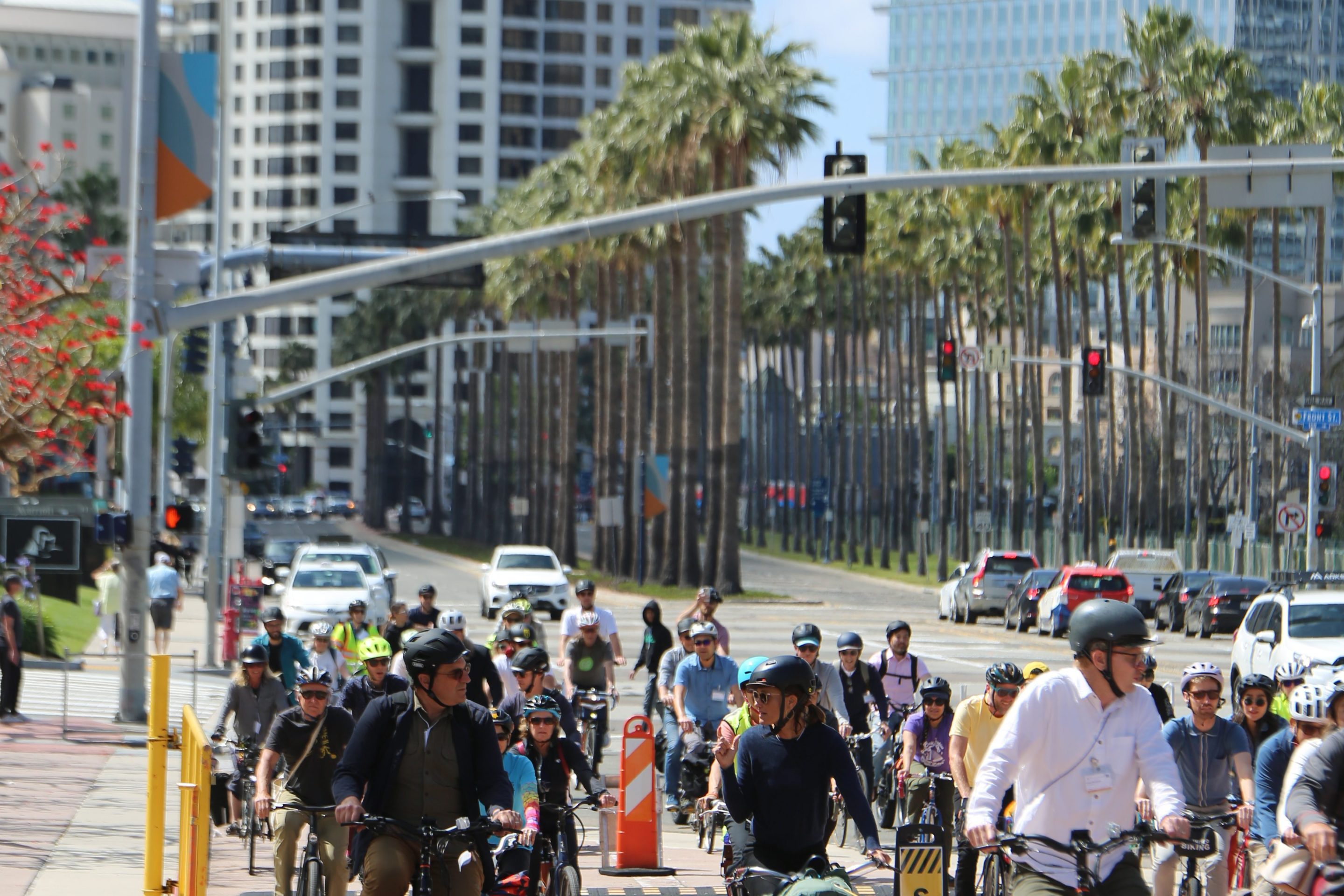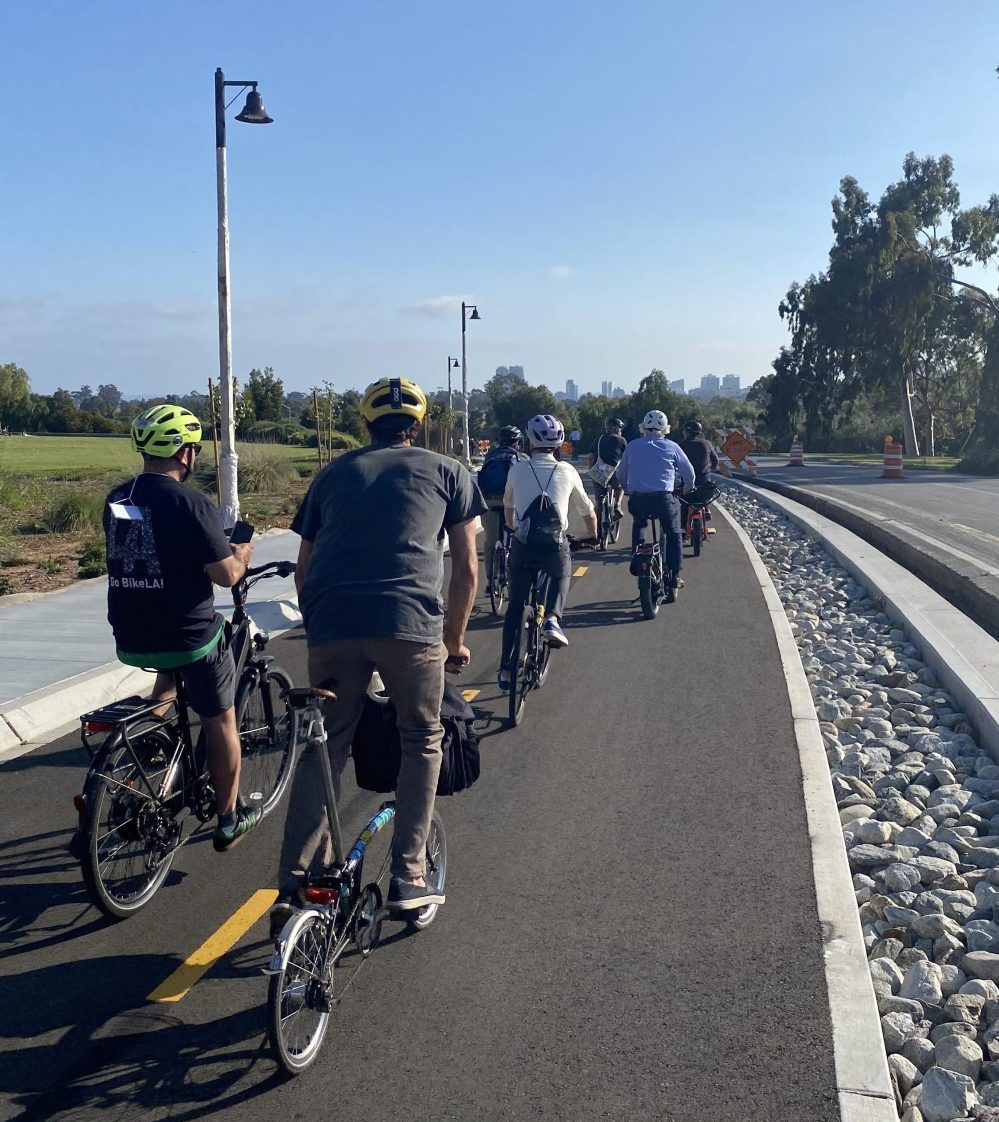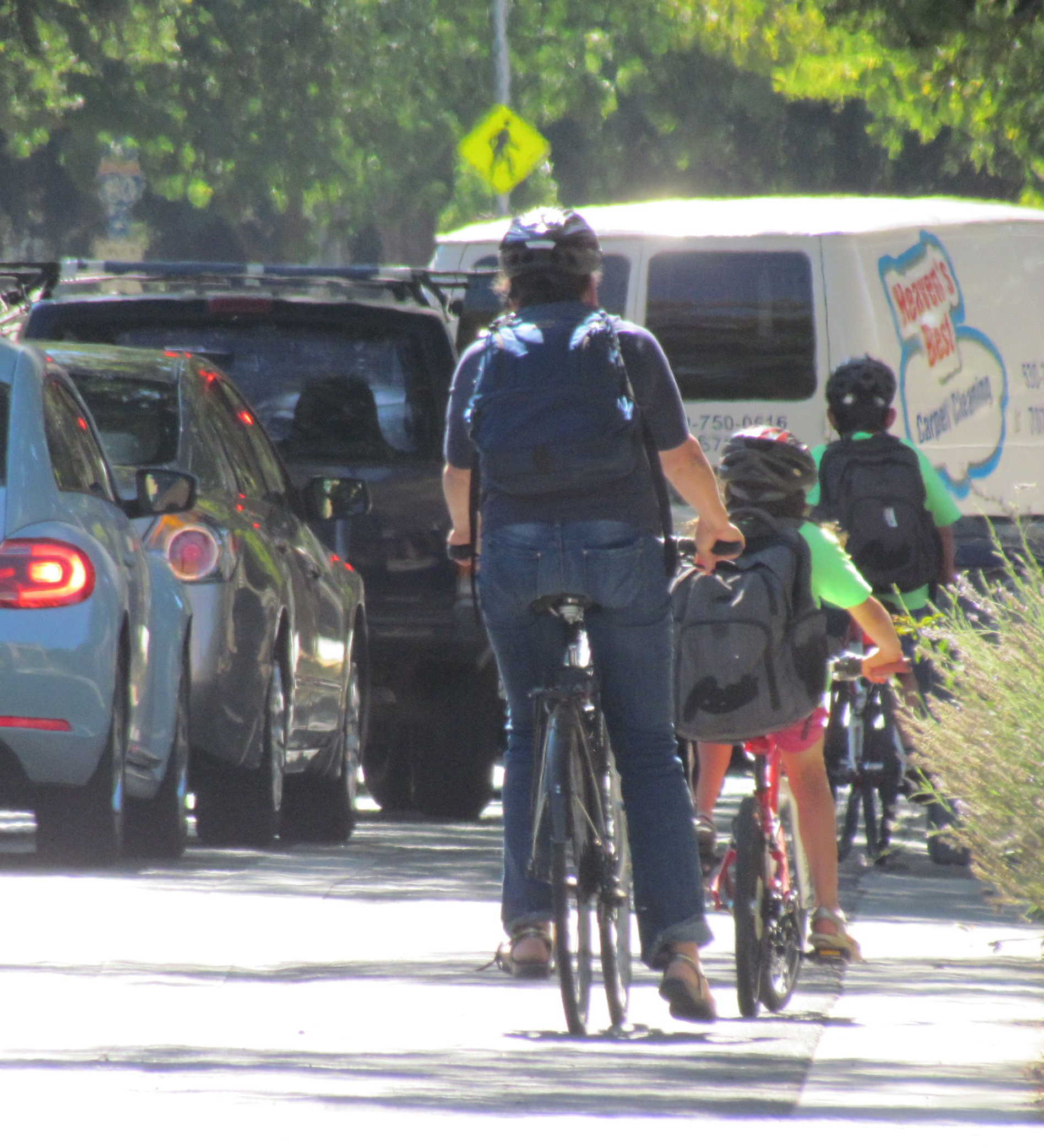Note: GJEL Accident Attorneys regularly sponsors coverage on Streetsblog San Francisco and Streetsblog California. Unless noted in the story, GJEL Accident Attorneys is not consulted for the content or editorial direction of the sponsored content.
Updating Caltrans' Highway Design Manual takes a long time, so it's frustrating but not that surprising that Caltrans' Design Information Bulletin #94 - Complete Streets: Contextual Design Guidance, whose promised release date had been "June or July" of last year, was just released in January.
This new design guidance is a strong statement on the part of the state transportation department that, when roads are designed and improved, consideration must be given to the safety and comfort of road users who are not in cars. It's a necessary addition to Caltrans' design guidance, and provides specific standards and best practices for developing complete streets "to support the design of comfortable and convenient streetscapes by utilizing space-efficient forms of mobility such as people walking, biking, rolling, or accessing transit."
It's long overdue - so take a moment to celebrate its release.
It contains thoughtful considerations, such as "the needs of pedestrians and bicyclists should be given special consideration, as their forward movement is physically taxing and opportunities for rest and shelter are of special importance."
It considers context, including place type (rural, suburban, urban, city center) and road use (speeds and traffic levels) in its recommendations about what type of complete streets elements to consider including.
It almost makes one feel welcome to use the streets on bike and on foot - in theory anyway.
But strong guidance from headquarters is one thing. Translating that to the districts, and actually getting these recommendations on the ground, is another.
Every Caltrans district has completed a complete streets plan, meaning they have identified places where safety improvements need to be made. But are they making the improvements they say are needed? That's harder to pin down.
A quick perusal of the current proposed State Highway and Operations and Performance Plan (SHOPP) - a list of projects prioritized by Caltrans districts and submitted to the California Transportation Commission for funding approval - shows that less than a quarter of the projects in it contain the main complete streets elements prioritized by the state (sidewalks, crosswalks, and bike lanes).
But Caltrans says that almost half of the projects qualify as "Complete Streets" projects. What does that mean? Do they include - and count - things like pedestrian "beg buttons" on signals, or so-called "bike-friendly" grates (friendly because they won't grab a bike's tire and throw a rider to the ground) on gutters? These things are important, and should be included as a matter of course in all projects - but should they "count" as making a street "complete" so that all users feel safe and welcome?
Which brings us to S.B. 960, introduced by Senator Scott Wiener also last month.
The new bill is similar to an earlier one that Senator Wiener got past the legislature a few years ago - despite resistance from Caltrans - only to have it vetoed by Governor Newsom. At the time, Newsom said the bill was "not necessary" because Caltrans was already in the process of adopting its own internal guidelines for Complete Streets.
Well, five years later, they have finally issued those guidelines. Does that make the new bill irrelevant? Hardly.
It is difficult enough for Caltrans headquarters to come to agreement on what should be included and prioritized in a complete streets policy. It's another step to get the twelve districts around the state to take them seriously. Caltrans districts shouldn't be able to claim credit for fulfilling only the most basic and simple of what are listed as "complete streets" elements. Even the best policy on the books - even this new high-quality Design Information Bulletin - can't force them.
But legislation can do so.





